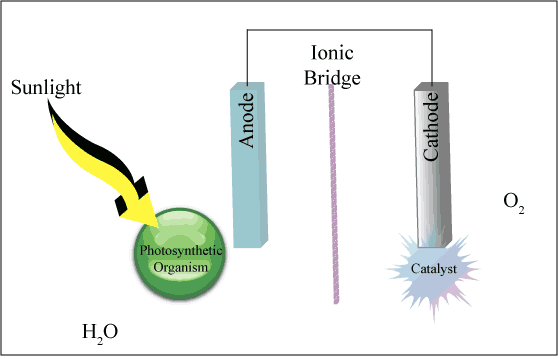Development of Bio-Photovoltaic Devices
Increased awareness of the environmental effect of using fossil fuels as well as government targets to reduce carbon dioxide emmisions have resulted in an increased interest in methods of harnessing solar energy. Traditional techniques are based around the photovoltaic effect and have been succesefully developed to produce a commercially viable product. However, the device contains expensive, high-purity semi-conductors so alternative techniques using cheaper material but maintaining the high conversion efficiency are being investigated.
We are currently working on developing an alternative technique, the bio-photovoltaic device. This exploits the photosynthetic apparatus of biological material, such as cyanobacteria or algae, to convert the solar energy into electrical energy and then uses this electrical energy to drive a current or create a potential difference to drive a chemical reaction. The animation below shows how a bio-photovoltaic device works with the simple example of producing water at the cathode.

In collaboration with Prof. Alison Smith (Department of Plant Sciences) and Prof. Chris Howe (Department of Biochemistry) as part of the University of Cambridge Bioenergy Initiative and Prof. Laurie Peter and Dr Petra Cameron (University of Bath) we have developed a prototype device using a microfluidic approach to both speed up the desgin and development stage and enhance mass transfer effects. We have shown that this device can be used with a variety of biological material such as extracted photosynthetic material (thylakoid membranes), cyanobacteria and algae.
Current work on this project involves the investigation of fundamental processes occurring within the device including:
- Investigation of electron transport within the biological system
- Investigation of electron transport from the biological component to the synthetic component
- Development of a biocompatible, highly conductive electrode material
- Development of a numerical model to characterise device performance

